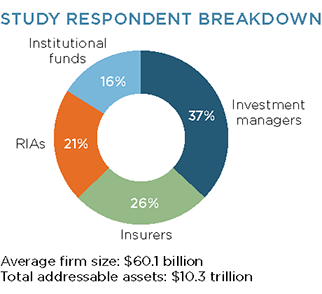The difficult trading environment in bond markets is fueling the use of bond ETFs in institutional portfolios.
The institutional investors participating in the Greenwich Associates 2016 U.S. Bond ETF Study are experiencing longer execution times, increased execution costs and more difficulty sourcing fixed-income securities and completing trades—especially large ones.
These challenges have become so pronounced that they are causing institutions to alter their investment processes. Not only are institutions adding resources and upgrading systems, but they are also increasing the importance of liquidity when assessing an investment. Furthermore, institutions are looking beyond individual bonds to alternative vehicles that can provide required fixed-income exposures.
Bond ETFs are emerging as an important alternative for institutions implementing trades and adjusting portfolios. Growing numbers of institutions are incorporating ETFs into their investment universe, using them as tools to rotate sector allocations, increase or reduce risk levels, and adjust duration.
MethodologyBetween June and August 2016, Greenwich Associates interviewed 104 U.S.-based institutional investors about their use and perceptions of bond exchange-traded funds (ETFs). All respondents were users of ETFs. The study included 38 investment managers (firms managing assets to specific strategies/guidelines), 27 insurance companies, 22 registered investment advisors (RIAs), and 17 institutional funds (pensions, endowments, and foundations). Fifty-one percent of these firms had total assets under management of less than $10 billion, 27% had $10–$100 billion, and 22% had more than $100 billion. Of the firms participating, on average approximately 75% of assets were managed internally and 25% of assets were managed by external managers.


